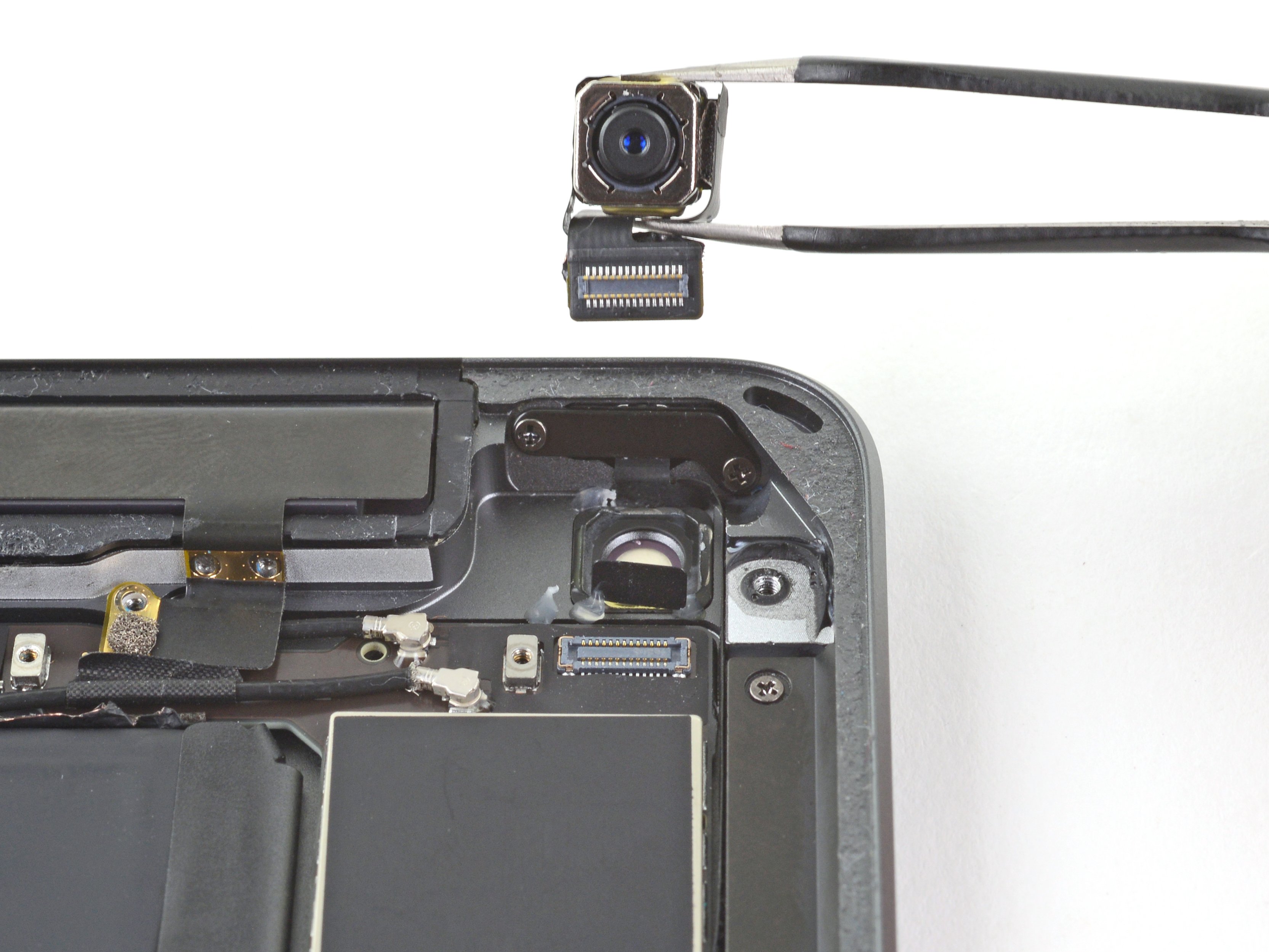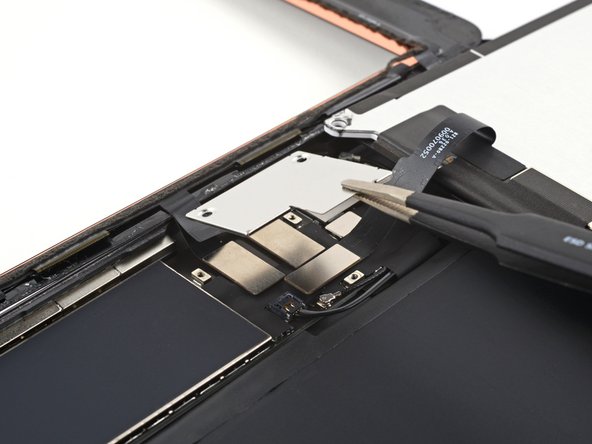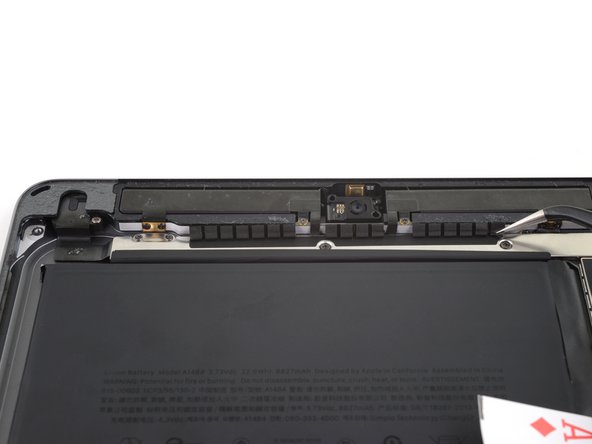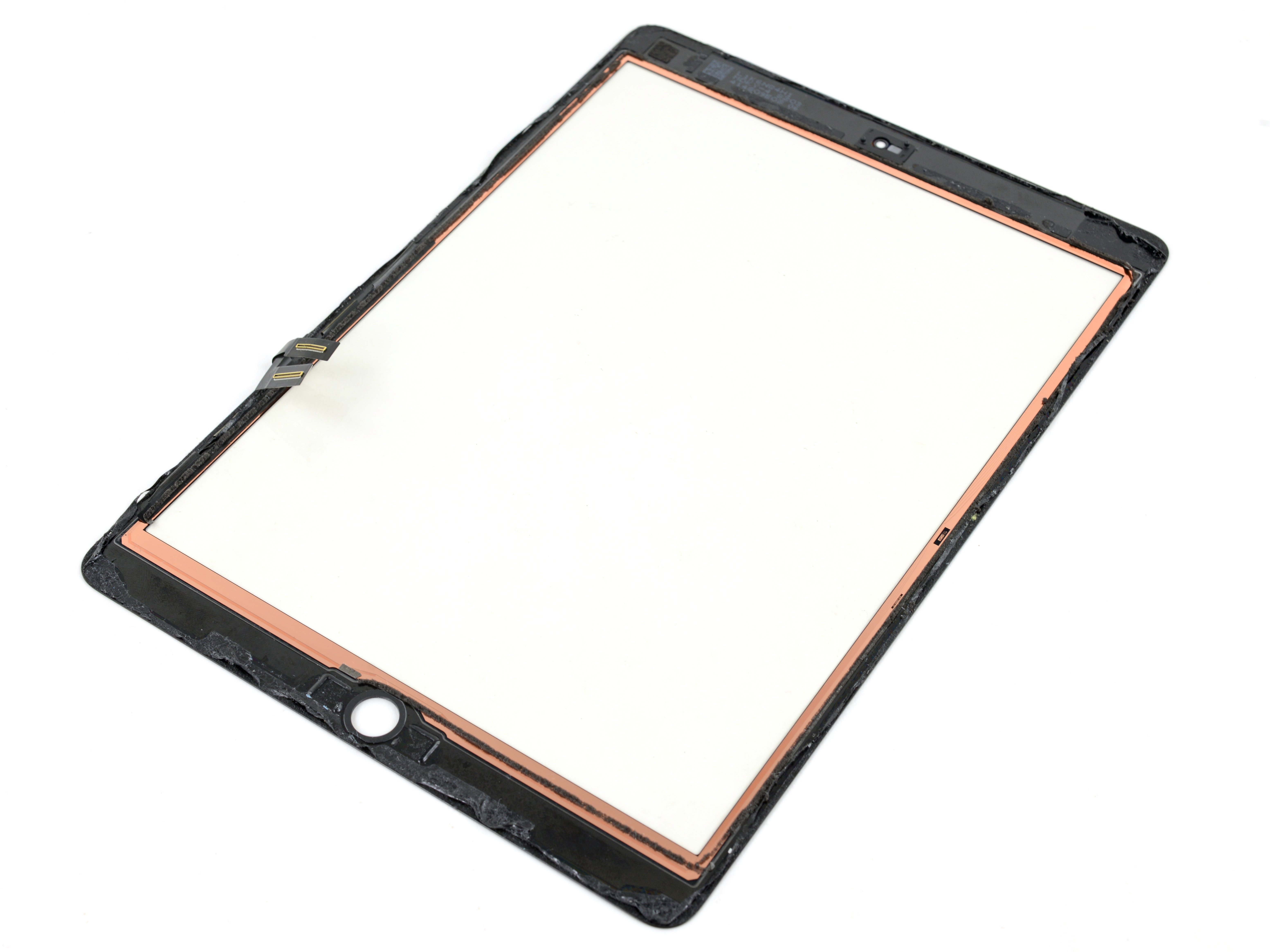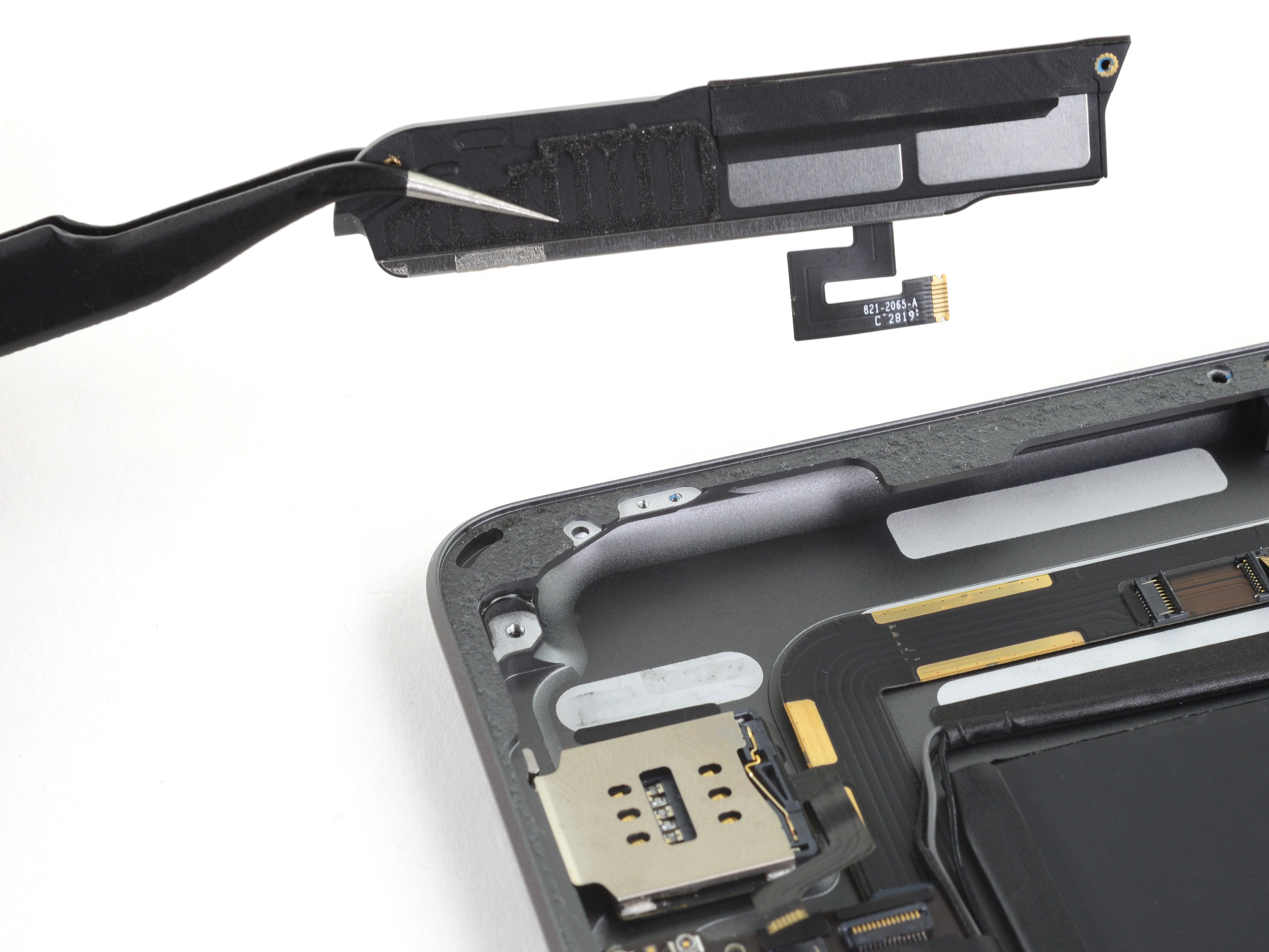iPad 8 LTE Rear Camera Replacement
Duration: 45 minutes
Steps: 53 Steps
Ready to swap out the rear camera on your iPad 8 LTE? You've come to the right place! Just a quick heads-up: this guide is specifically for the LTE model. If you’re rocking the Wi-Fi version, no worries—just click here. As you dive in, be super cautious when isolating the battery with a battery blocker; those battery contacts can be a bit fragile and may bend or break, leading to some serious damage. If you decide to tackle this without isolating the battery, stick to non-metal tools whenever possible (except when it comes to those pesky screws) to avoid any short circuits or damage to delicate components. Oh, and just a tiny note: some of the photos you’ll see might be from a different model, but don’t fret! They won’t mess with the steps you need to follow. Happy repairing!
Step 1
- Warm up an iOpener and press it against the left edge of your device for a solid two minutes. It's like giving your device a cozy spa treatment!
Tools Used
Step 2
- While you're letting that adhesive take its sweet time to loosen up, keep an eye out for these delicate areas that are a bit shy about prying:
- Front camera
- Antennas
- Display cables
Step 3
Next up, we’re showing you the Anti-Clamp in action. It’s a nifty tool we designed to make opening your device a breeze. Not using it? No worries—just skip ahead a few steps for another method.
If you're curious about the full scoop on using the Anti-Clamp, check out this guide.
Is your iPad’s surface too slippery for the Anti-Clamp to grip? No problem! Just use some tape to add a bit of traction and you’re good to go.
- Slide the blue handle back to release the Anti-Clamp's arms.
- Set something under your iPad so it sits nice and level between the suction cups.
- Place the suction cups close to the middle of the left edge—one near the top, the other near the bottom.
- Keep the bottom of the Anti-Clamp steady and press down firmly on the top cup to get a good seal.
Step 4
- Grab the blue handle and pull it forward to lock those arms in place.
- Next, spin the handle clockwise a full 360 degrees or until the suction cups start to stretch out.
- Keep an eye on those suction cups — they should stay lined up. If they start to slip, just loosen them a bit and realign the arms before continuing.
Step 5
Turn no more than half a twist at a time, then take a breather for a minute. Let the Anti-Clamp and patience do the heavy lifting!
Want to know how to use a hair dryer the right way? Check out this guide for all the details you'll need!
If the Anti-Clamp isn't giving you the gap you need, heat up the area a bit more and rotate the handle clockwise for half a turn. That should do the trick!
- Give it a minute to let the adhesive loosen up and create a little gap to work with.
- If the screen feels too cool to the touch, grab a hair dryer and warm up the left edge of the iPad a bit.
- Slide an opening pick under the digitizer once the Anti-Clamp opens up a big enough space.
- Go ahead and skip the next step.
Step 6
If your screen has taken a serious hit and is looking like a jigsaw puzzle, a simple trick is to slap on some clear packing tape to help the suction cup stick. Feeling adventurous? You can also go for some super strong tape instead of the suction cup. And if it really comes down to it, a little superglue can work wonders to attach the suction cup to that shattered display.
- Once the screen is nice and toasty, grab the suction handle and stick it as close to the left edge as you can. You want a solid grip!
- Gently lift the screen with the suction handle to make a small gap between the digitizer and the frame. A little space is all you need.
- Now, carefully slide an opening pick into that gap you just made. Work your magic, and you’re on your way.
Tools Used
Step 7
No worries if you spot the opening pick peeking through the digitizer — just go ahead and pull it out! The LCD screen should be just fine, though you might leave behind some stubborn adhesive that's a bit tricky to clean up.
- Pop in a second opening pick into that new gap you just made!
- Gently slide the pick over to the bottom-left corner of your device to break free from the adhesive's grip.
- Keep the pick snug in the bottom-left corner to stop the adhesive from playing hide-and-seek again.
Step 8
- If your opening pick gets a bit clingy with the adhesive, just give it a little roll along the iPad’s edge to smoothly keep peeling that sticky seal.
Step 9
- Slide the first opening pick gently towards the top-left corner of the device to break that sticky seal.
- Leave the pick hanging out in the top-left corner to stop that adhesive from making a comeback.
Step 10
- Warm up an iOpener and place it on the top edge of your device for a cozy two minutes.
Tools Used
Step 11
- Gently twist the pick around the top-left corner to loosen up that stubborn adhesive.
Step 12
Be careful when sliding the pick around the front camera. It's easy to scratch that lens! We'll walk you through how to avoid any mishaps.
- Gently slide the opening pick along the top edge of the device, pausing just before you reach the front camera.
Step 13
- Gently pull the pick out until just the tip is hanging out between the digitizer and the frame.
- Slide that pick above the front camera to break free the sticky adhesive.
- Keep the pick close to the right side of the front camera before moving on to the next step.
Step 14
- Pop that pick back in and give it a little slide towards the top-right corner of your device to fully break free from that sticky adhesive. You're almost there!
- Once you've got it in place, leave the pick hanging out in the top-right corner to keep that adhesive from making any sneaky moves and sealing back up.
Step 15
- Warm up an iOpener and stick it on the right edge of your device for a cozy two minutes.
Tools Used
Step 16
- Gently twist the pick around the top-right corner to loosen up that stubborn adhesive like a pro.
Step 17
The display cables hang out about halfway up from the bottom of your iPad. Slide carefully and stop once you’re about three inches from the bottom—no need to go further!
- Grab a new opening pick and slide it right into the groove along the iPad's right edge, aiming for that sweet spot in the middle!
Step 18
- Warm up an iOpener and chill it on the bottom edge of your device for a solid two minutes to loosen things up.
Tools Used
Step 19
Be careful not to spin the pick all the way around the corner – you might end up accidentally hurting the antenna. Keep it steady and gentle!
- Gently slide the bottom-left pick into the corner to pry apart the adhesive with finesse.
- Keep that pick in place like a trusty sidekick before moving on to the next adventure.
Step 20
Keep your pick sliding only towards the home button—sliding it the other way might just mess up the antenna, and we want to keep things smooth!
If you find yourself needing to glide that pick over this spot again, just pop it out and slide it back in at the bottom-left corner. You've got this!
- Slide a fresh opening pick into the little gap you just made at the bottom edge of the iPad.
- Gently glide the pick over the antenna, making sure to pause just shy of the home button.
- Keep that pick hanging out to the left of the home button before you move on.
Step 21
Just a friendly heads-up: only slide that pick in about 1 mm – we want to keep the right antenna safe and sound!
- Pop an opening pick into that little gap you've just made.
- Gently slide the pick under the home button and wiggle it towards the bottom-right corner, keeping just the tip nestled between the digitizer and the frame.
Step 22
Gently slide the pick towards the home button, but not the other way! Pushing it the wrong direction could mess with the antenna. Play it safe!
If you need to slide the pick over this section again, just take it out and slide it back in from the bottom-right corner. Simple as that!
- Pop the pick back in and gently slide it towards the home button to finish separating the bottom adhesive.
- Keep the pick positioned just to the right of the home button before you move on to the next step.
Step 23
- Warm up your iOpener and press it onto the right edge of your device for a solid two minutes. This will help loosen things up and make the next steps a breeze!
Tools Used
Step 24
Take it easy with this step. Make sure the adhesive is nice and warm, work slowly, and carefully separate all the adhesive with a pick. Don't hesitate to pause and reheat if needed.
If you're feeling some serious resistance, give those edges a little more heat and glide an opening pick along them like a pro.
- Gently twist the two opening picks at the left corners of the iPad to lift the digitizer just a bit, while loosening the last bits of adhesive in the process.
Step 25
- Gently lift the left edge of the digitizer, allowing you to carefully peel away the adhesive along the right edge of your iPad.
Step 26
- Keep the digitizer steady while you gently slide an opening pick between the two display cables to carefully loosen the last bit of adhesive holding them together.
Step 27
- Once you've successfully peeled away all the adhesive, gently open the digitizer like a book and lay it flat next to the iPad, like a buddy keeping watch.
- As you gear up for reassembly, give that leftover adhesive a good scrub with some isopropyl alcohol. And if you're bringing back the digitizer, make sure it gets the same treatment! Don't forget to swap out any old adhesive with our handy adhesive strips or pre-cut adhesive cards.
- When putting everything back together, keep an eye on those display cables! Make sure they're tucked away neatly beneath the LCD screen to avoid any hiccups.
Step 28
- Grab your tweezers or just use your fingers to carefully peel away any tape hiding those LCD screws.
Tools Used
Step 29
- Grab your trusty Phillips screwdriver and let's get to work! Start by unscrewing those four 4.3 mm screws that are keeping the LCD screen in place. You've got this!
Step 30
The LCD has a gentle bond with the frame, making it a bit of a cozy fit.
- Gently slide a spudger into the gap between the frame and the top-right corner of the LCD.
- Carefully pry with the spudger to break the adhesive seal.
Tools Used
Step 31
- Go ahead and do the same thing for the top-left corner of the LCD. You got this!
Step 32
Hold your horses! Don’t go yanking that LCD out just yet—it's still hanging on by a flex cable.
- Gently wedge the flat end of a spudger under the LCD just enough to lift it out of its slot so you can grab it with your fingers.
- Flip the LCD over like turning a page in a book, lifting near the camera and folding it back over the home button side of the frame.
- Set the LCD down on a clean, soft, lint-free surface to easily reach the display cables without any hassle.
Tools Used
Step 33
- Grab a Phillips screwdriver and carefully unscrew the 2.3mm-long screw that holds the battery connector in place on the logic board.
Step 34
Check out these photos showcasing the battery connector hiding under the logic board! Use them as your trusty guide while you carefully disconnect that battery like a pro.
Take note of those cantilever springs on the logic board that give a little nudge to the battery contact pads. Since both the logic board and battery are glued down, grab something thin and flexible to slide between the contact points and disconnect the battery effortlessly.
Step 35
Watch out when you're isolating the battery with a battery blocker! Those battery contacts can be a bit fragile and might bend or break, which could lead to some serious damage that you definitely don’t want. Stay sharp and handle with care!
Make sure the battery blocker logo is facing up. It's like a little logo dance party—keep it on top!
Don’t force the battery blocker under the connector. If it’s being stubborn, try slipping a playing card underneath to disconnect the battery instead. It’s like the gentle nudge it needs.
The battery blocker (or playing card) should glide smoothly under the logic board. No hurdles! Once it’s in, it should sit at a casual 15-degree angle, just hanging out comfortably.
- Gently slide the battery blocker under the logic board's battery connector at a cool 35-degree angle, just like you're performing a delicate dance move.
- Keep that battery blocker snugly in place while you tackle the next steps. You've got this!
Tools Used
Step 36
- Grab your trusty Phillips screwdriver and unscrew the three 1.4 mm screws holding the display cable bracket in place. You've got this!
Step 37
- Grab your trusty tweezers or just your fingers, and gently lift off the display cable bracket like a pro.
Tools Used
Step 38
- Gently use the flat end of a spudger to lift and unplug the LCD cable press connector.
- When reconnecting press connectors like this, line up one side carefully and press down until you hear a click, then do the same on the other side.
- Avoid pressing the middle — if the connector slips out of alignment, the pins might bend and cause permanent damage.
Tools Used
Step 39
- Carefully detach the LCD and lay it down screen-side on a neat, soft, lint-free surface.
Step 40
- Grab your trusty tweezers and gently peel away the tape that's covering the home button cable ZIF connector. You've got this!
Tools Used
Step 41
- Grab a spudger, an opening tool, or even your trusty fingernail and gently lift the small, hinged locking flap on the home button cable ZIF connector. You've got this!
Tools Used
Step 42
- Grab a pair of tweezers and gently pull the home button ribbon cable straight out of the ZIF connector. Nice and steady, and you're good to go!
Tools Used
Step 43
Be gentle and only pry on the connectors themselves—give the logic board socket a break to keep your iPad happy and healthy.
- Gently slide the flat end of your spudger under the two digitizer cable press connectors to pop them loose and disconnect them.
Tools Used
Step 44
Be extra careful not to mess with the home button ribbon cable – it's delicate, and we don't want any accidental tears or punctures.
- Grab your trusty spudger and gently lift the vibration isolator right below the SIM card reader. You're doing great!
- Now, go ahead and take out that vibration isolator. Easy peasy!
Tools Used
Step 45
The cable is gently held in place with a bit of light adhesive, nothing too sticky—just enough to keep it cozy.
- Grab a pair of tweezers and gently peel the home button cable off the rear case. Take your time and be careful, it's all about that steady hand.
Tools Used
Step 46
Grab your trusty opening pick and slice through any leftover adhesive that might still be holding the front panel assembly to the frame. It's like a little surgery for your device!
Watch out! Without the right insulation, those parts of the digitizer might accidentally touch other components, leading to some awkward touch input mishaps. Yikes!
This insulation is a sneaky little thing—it's invisible to the naked eye and quite different from the foam dust barrier strips you might find on many iPads.
- Start by taking off the front panel assembly with care.
- If your new display is playing tricks on you with 'ghost' or 'phantom' touches, don’t worry! A simple fix is to apply a super thin layer of insulating tape, like Kapton (polyimide) tape, to the highlighted spots on the back of the panel. The replacement digitizers from Salvation Repair come with the right insulation, so you shouldn't need to add any tape!
- When it's time to put everything back together, make sure to remove any leftover adhesive from your iPad and give those glued areas a good cleaning with high concentration isopropyl alcohol (90% or higher) and a lint-free cloth. This will prep your iPad for some fresh adhesive and help ensure a solid bond.
- Before sealing everything up, test your iPad's functions and apply the pre-cut adhesive strips to the back of the display using our handy display adhesive application guide.
Step 47
- Gently lift the LCD buffer tape away from the upper component bracket. Take your time and be careful with it!
Step 48
- Grab your trusty Phillips screwdriver and loosen the five screws holding down the upper component bracket:
- Three screws, each 1.4 mm long
- Two screws, each 1.9 mm long
Step 49
Sometimes you'll need to carefully peel the upper component bracket away from the tape that's holding it down to the logic board.
- Gently pry up the upper component bracket using the pointed end of your spudger until you can grab it with your fingers.
- Take out the upper component bracket.
Tools Used
Step 50
- Grab the flat end of your trusty spudger and gently pry up to disconnect the rear camera press connector like a pro.
Tools Used
Step 51
- Warm up an iOpener and stick it onto the top-left corner of the iPad's back for about thirty seconds to soften that rear camera adhesive.
Tools Used
Step 52
- Grab your opening tool and gently pop the rear camera out of the back case—easy does it!
Step 53
- Put your device back together by following these steps in reverse—easy peasy!
- Got some old electronics? Drop them off at an R2 or e-Stewards certified recycler to keep things green.
- If things didn’t quite work out, try some basic troubleshooting or swing by our iPad 8 Answers community for advice.
- And remember, if it’s feeling tricky, you can always schedule a repair with us.
